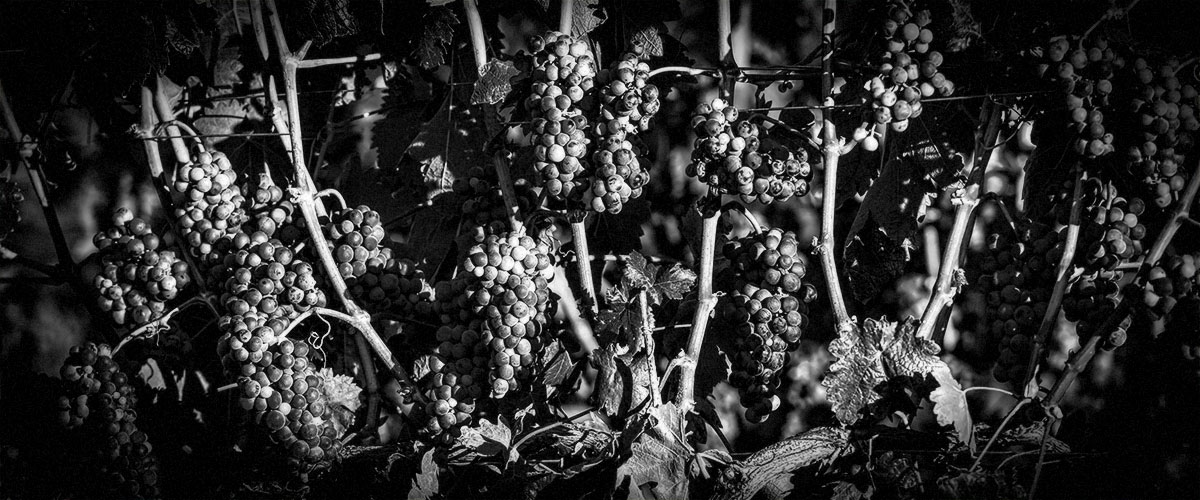by Chris Russell, Contributor
“What are tannins, and can you taste them in wine?” We get questions like this fairly often in the 2Hawk Vineyard & Winery tasting room. Found naturally in grapes, tannins are antioxidant polyphenols that impart dryness, astringency, and mouthfeel to wines. They play a crucial role in the winemaking process, starting at harvest and continuing on even as wines age in the bottle. Kiley Evans, winemaker here at 2Hawk, shares his thoughts on tannins in wine:
What Are Tannins?
Tannins belong to a type of substance called polyphenols, which exist in many plant materials, including grape seeds, skins, and stems; oak wood; and tea leaves. When present in wine in significant amounts, you can indeed taste them, though the taste may be hard to single out if you’re unsure what you’re looking for.
Tannins alone are generally bitter, drying, or puckery—some more so than others—but in wine, the tannins, acids, sugars, and your mouth all coalesce to provide a richness of texture and sensation of smoothness on the palate. The best indication that you’re tasting tannins is they have a feeling of “grip,” or pulling on the sides of the mouth. Strong tannins also produce a drying sensation on the tongue, something you may have experienced before in a cup of over-steeped black tea. Acidity, while it is sometimes described as puckery, doesn’t provide the same physical sensations of texture.
As antioxidants, tannins play a role in how a wine ages, acting as preservatives. They tend to smooth out, or polymerize, over time, with bitterness and astringency gradually giving way to a more complex, rich aroma and essence.
How Do Tannins Get in Wine?
In red wines, tannins come from the grapes themselves as reds are fermented in contact with the grape skins. They are also found in the stems and seeds of the grapes, but we take steps to minimize extraction of those tannins as they can be overly harsh and bitter. The best-tasting tannins come from the skins of optimally ripe grapes, so we put a lot of work into determining the perfect time to harvest grapes for the best character.
In white wines, we typically avoid tannins. We press the grapes and immediately separate the juice from the fruit so tannins from the stems, seeds, and skins aren’t extracted to any significant degree. That doesn’t mean our whites are free of tannins: barrel-fermented and barrel-aged white wines will pick up some wood tannins from the barrel. Overall, though, our whites have far fewer tannins than our reds. As Kiley states:
A Careful Balance
How much tannin should there be in a given wine? It’s a balancing act! In addition to the drying, puckery sensation they provide on their own, tannins also enhance the perception of acidity in the wine. Together, tannins and acids act as a counter to the wine’s natural sweetness. Too much of any of the three, and the wine will be out of balance: bitter and puckery, tart and astringent, or cloyingly sweet. Close attention to tannins, acids, and sweetness—along with alcohol and fruit—is necessary to produce a balanced wine that is complex, vibrant, and memorable.
Learn More
Future blog posts will explore more elements that make up the character of wine. Curious about something else you might be tasting? Please let us know—or stop by our tasting room to learn more!
Meanwhile, if you’d like to know more about our Rogue Valley wines, here are a few ways:
- Sulfites are another hot topic in our tasting room. What are they, and where do they come from? Check out our blog post, What Are the Sulfites in Wine?
- Visit our tasting room to sample our current wines.
- Follow us on Facebook and Instagram to keep up with the latest happenings.


I m bottling my wine soon in quarts.
If I add sulfides about 30 parts per million.
About a quarter teaspoon to 5 gallons am I safe ?
Safe I mean can I store my quart bottles at 58 degrees with out adding anything else?
I heard ascorbic acid added to the qt. Bottles is good also.
John Disano, RI
There isn’t a one-size-fits-all answer to the question of how much sulfite to add. The level of sulfites I add to wine before bottling depends on a number of different factors, including varietal, wine style, alcohol level, residual sugar, pH, microbial stability, closure, anticipated release date, and initial sulfite level. Also, I always weigh sulfite to the tenth of a gram even when adding sulfite to a large lot. In the case of hand-bottling into quart bottles, precision in weighing out sulfite for addition is critical to adding the correct, consistent amount.